Students looking for the Bridges in Mathematics Grade 5 Home Connections Answer Key Unit 5 Module 4 can find a better approach to solve the problems.
Bridges in Mathematics Grade 5 Home Connections Answer Key Unit 5 Module 4
Bridges in Mathematics Grade 5 Home Connections Unit 5 Module 4 Session 1 Answer Key
Sharing & Grouping—Multiplying & Dividing
Question 1.
Read each story problem. Then:
- Write an equation (including the answer) for the problem.
- Fill in the bubble to show whether the answer means the size of each group or the number of groups.
a. The swim team is going to a meet across town. There are 35 swimmers on the team, and each van can take 5 of them. How many vans will be needed to take the whole team?
Equation: _________________
The answer means:
![]() the size of each group (for example, the number of items each person got)
the size of each group (for example, the number of items each person got)
![]() the number of groups
the number of groups
Answer:

Explanation:
Given the swim team is going to a meet across town. There are 35 swimmers on the team and each van can take 5 of them equation 35/7, the size of each group is 5 and the number of groups are 7, Wrote an equation and filled in the bubble to show the answer which means the size of each group.
b. Jacob picked 28 flowers and divided them equally between 2 vases. How many flowers did he put in each vase?
Equation:
The answer means:
![]() the size of each group (for example, the number of items each person got)
the size of each group (for example, the number of items each person got)
![]() the number of groups
the number of groups
Answer:

Explanation:
Given Jacob picked 28 flowers and divided them equally between 2 vases. Number of flowers did he put in each vase are equation: 28/2 so the number of groups are 14 , Wrote an equation and filled in the bubble to show the answer which means the number of groups.
Question 2.
Circle the equation that matches each story problem. Then fill in the correct answer.
a. Alexus and her 2 sisters picked 48 strawberries and shared them equally. How many strawberries did each girl get?
48 ÷ 2 = _____________
3 × 48 = _____________
48 ÷ 3 = ______________
48 – 3 = ______________
Answer:
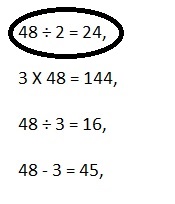
Explanation:
Circled the equation that matches the story problem filled in the correct answer as Alexus and her 2 sisters picked 48 strawberries and shared them equally so number of strawberries did each girl get are 48 ÷ 2 = 24.
b. Miguel is making valentines. It takes 1 of a sheet of paper for each valentine and Miguel wants to make 26 valentines. Number of many sheets of paper will he need
26 ÷ \(\frac{1}{2}\) = _______________
26 × \(\frac{1}{2}\) = _______________
26 × 2 = _______________
26 – \(\frac{1}{2}\) = _______________
Answer:

Explanation:
Circled the equation that matches the story problem filled in the correct answer as Miguel is making valentines. It takes 1 of a sheet of paper for each valentine and Miguel wants to make 26 valentines. Number of many sheets of paper will he need is 26 X 1 = 26.
Question 3.
Circle the equation that matches each story problem. Then fill in the correct answer.
a. Ling and her mother are making dumplings. It takes 4 of an ounce of meat for each dumpling, and they are going to make 36 dumplings. How many ounces of meat will they need?
36 × 4 = _______________
3 × 36 = _______________
3 – 36 = _______________
36 × 4 = _______________
Answer:

Explanation:
Circled the equation that matches the problem. Then filled with the correct answer.
Ling and her mother are making dumplings. It takes 4 of an ounce of meat for each dumpling and they are going to make 36 dumplings. Number of ounces of meat will they need are 36 X 4 = 144.
b. There was 1 of a pan of cornbread leftover from dinner. Jake and his dad ate half of the leftover cornbread for breakfast. How much of the whole pan did they have at breakfast?
\(\frac{1}{2}\) × \(\frac{1}{2}\) = _______________
\(\frac{1}{4}\) + \(\frac{1}{4}\) = _______________
\(\frac{1}{2}\) ÷ \(\frac{1}{2}\) = _______________
\(\frac{1}{2}\) – \(\frac{1}{2}\) = _______________
Answer:
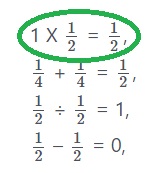
Explanation:
\(\frac{1}{2}\) X \(\frac{1}{2}\) = \(\frac{1}{2 X 2}\) = \(\frac{1}{4}\).
\(\frac{1}{4}\) + \(\frac{1}{4}\) = \(\frac{1 + 1}{4}\) = \(\frac{2}{4}\) = \(\frac{1}{2}\),
\(\frac{1}{2}\) ÷ \(\frac{1}{2}\) = \(\frac{1}{2}\) X \(\frac{2}{1}\) = \(\frac{2}{2}\) = 1.
\(\frac{1}{2}\) – \(\frac{1}{2}\) = 0.
Question 4.
Each of the visual models below shows the results of multiplying one fraction by another. Label each of the shaded regions with its dimensions and area. Then write a multiplication equation to match.
ex:
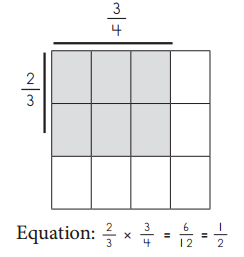
a.
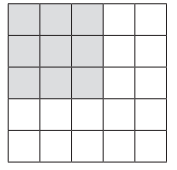
Equation: _______________
Answer:
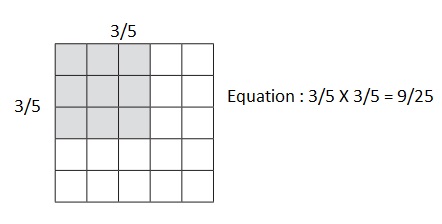
Equation:
Labeled each of the shaded regions with its dimensions and area. Then wrote a multiplication equation to match
\(\frac{3}{5}\) X \(\frac{3}{5}\) = \(\frac{3 X 3}{5 X 5}\) = \(\frac{9}{25}\).
b.
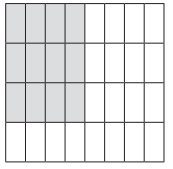
Equation: _______________
Answer:

Equation:
Labeled each of the shaded regions with its dimensions and area. Then wrote a multiplication equation to match \(\frac{3}{4}\) X \(\frac{4}{8}\) = \(\frac{3 X 4}{4 X 8}\) = \(\frac{3}{8}\).
c.

Equation: _______________
Answer:
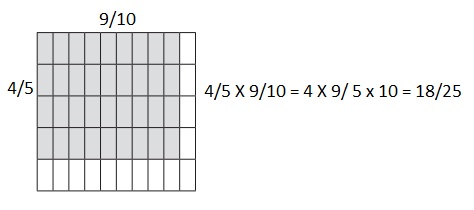
Equation:
Labeled each of the shaded regions with its dimensions and area. Then wrote a multiplication equation to match \(\frac{4}{5}\) X \(\frac{9}{10}\) = \(\frac{4 X 9}{5 X 10}\) both goes by 2 we get \(\frac{18}{25}\).
Bridges in Mathematics Grade 5 Home Connections Unit 5 Module 4 Session 3 Answer Key
Operating with Fractions & Whole Numbers
Question 1.
Solve each of the story problems below. For each problem:
- Choose and circle one of the numbers in parentheses, depending on how challenging you want the problem to be.
- Write an expression to represent your problem.
- Use numbers, labeled visual models, or words to solve the problem and explain your strategy.
- Complete the sentence below with your solution to the problem.
a. It takes (\(\frac{1}{2}\), \(\frac{1}{3}\), \(\frac{3}{4}\), \(\frac{2}{3}\)) of a cup of flour to make a batch of pancakes. I have 4 cups of flour. How many batches of pancakes can I make?
Expression: _______________

I can make ______________ batches of pancakes.
Answer:
I can make 9 batches of pancakes,
Explanation:
Given It takes (\(\frac{1}{2}\), \(\frac{1}{3}\), \(\frac{3}{4}\), \(\frac{2}{3}\)) of a cup of flour to make a batch of pancakes. I have 4 cups of flour so I can make 4 X (\(\frac{1}{2}\) + \(\frac{1}{3}\) + \(\frac{3}{4}\) + \(\frac{2}{3}\)) we will take common denominator we get 4 X ([1 X 6 + 1 X 4 + 3 X 3 + 2 X 4])/12 = \(\frac{6 + 4 + 9 + 8}{3}\) = \(\frac{27}{3}\) = 9 therefore I can make 9 batches of pancakes.
b. Little Snail can crawl (\(\frac{1}{4}\), \(\frac{1}{3}\), \(\frac{3}{4}\), \(\frac{7}{8}\)) of a mile a day. How far can he crawl in 5 days if he crawls the same distance each day?
Expression:

Little Snail can crawl _______________ miles in 5 days.
Answer:
Little Snail can crawl 11\(\frac{1}{24}\) miles in 5 days,
Explanation:
As Little Snail can crawl \(\frac{1}{4}\) , \(\frac{1}{3}\), \(\frac{3}{4}\), \(\frac{7}{8}\) of a mile a day. So he can crawl in 5 days if he crawls the same distance each day is 5 X (\(\frac{1}{4}\) + \(\frac{1}{3}\) + \(\frac{3}{4}\) + \(\frac{7}{8}\)) we will take common denominator we get ( 5 X [1 X 6 + 1 X 8 + 3 X 6 + 7 X 3])/24 = 5 X \(\frac{6 + 8 + 18 + 21}{24}\) \(\frac{5 X 53}{24}\) = \(\frac{265}{24}\) as numerator is greater we write in mixed fraction as 11\(\frac{1}{24}\).
c. Keiko always takes her water bottle with her when she hikes, and she always drinks half a liter of water for every mile she hikes. Yesterday, she hiked 4 a mile. What fraction of a liter of water did she drink?
Expression: ________________
Keiko drank _____________ of a liter of water.
Answer:
Keiko drank 2 of a liters of water,
Explanation:
Keiko always takes her water bottle with her when she hikes and she always drinks half a liter of water for every mile she hikes. Yesterday, she hiked 4 a mile. Fraction of a liter of water did she drank is 4 X \(\frac{1}{2}\) = \(\frac{2 X 2}{2 X 1}\) liters = 2 liters.
Question 2.
Solve each of the multiplication problems below. For each:
- Divide the dimensions of each square so that you can represent each fraction as a dimension of a rectangle.
- Draw and label the dimensions and area, and write the answer.
- Write the problem and answer in words.
ex: \(\frac{2}{3}\) × \(\frac{4}{8}\) = \(\frac{8}{24}\) = \(\frac{1}{3}\)

Two-thirds of four-eighths is eight twenty-fourths, or \(\frac{2}{3}\).
a. \(\frac{2}{4}\) × \(\frac{3}{5}\) = ________________

Answer:
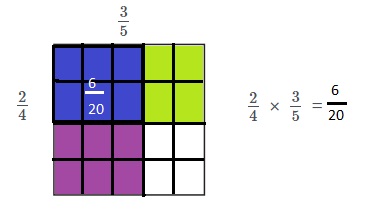
Six divided by Twenty,
Explanation:
Solved the multiplication problem
- Divided the dimensions of each square so that we can represent each fraction as a dimension of a rectangle,
- Drawn and labeled the dimensions and area and wrote the answer,
- Wrote the problem and answered in the words above as \(\frac{6}{20}\) & Six divided by Twenty.
b. \(\frac{2}{3}\) × \(\frac{4}{6}\) = ________________

Answer:
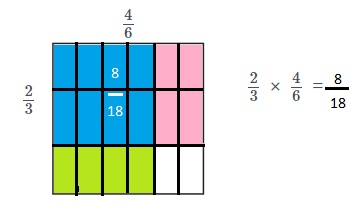
Eight divided by Eighteen,
Explanation:
Solved the multiplication problem
- Divided the dimensions of each square so that we can represent each fraction as a dimension of a rectangle,
- Drawn and labeled the dimensions and area and wrote the answer,
- Wrote the problem and answered in the words above as \(\frac{8}{18}\) & Eight divided by Eighteen,
c. \(\frac{3}{4}\) × \(\frac{5}{10}\) = ________________

Answer:
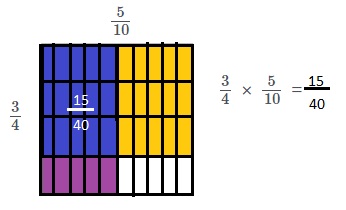
Fifteen divided by Forty,
Explanation:
Solved the multiplication problem
- Divided the dimensions of each square so that we can represent each fraction as a dimension of a rectangle,
- Drawn and labeled the dimensions and area and wrote the answer,
- Wrote the problem and answered in the words above as \(\frac{15}{40}\) & Fifteen divided by Forty.
Bridges in Mathematics Grade 5 Home Connections Unit 5 Module 4 Session 4 Answer Key
Unit 5 Review
Question 1.
Solve each of the story problems below. For each problem:
- Choose and circle one of the numbers in parentheses, depending on how challenging you want the problem to be.
- Write an expression to represent your problem.
- Use numbers, labeled visual models, or words to solve the problem and explain your strategy. (Someone should be able to read your paper and tell how you solved each problem without talking to you to find out.)
- Complete the sentence below with your solution to the problem.
a. Mrs. Alvarez had (\(\frac{1}{5}\), \(\frac{1}{8}\), \(\frac{3}{8}\), \(\frac{2}{3}\)) of a box of pencils. She divided the box equally among (3, 4, 5) students. What fraction of the box of pencils did each student get?
Expression: ________________

Each students got ______________ of a box of pencils.
Answer:
Each students got 16\(\frac{4}{10}\) of a box of pencils,
Explanation:
Given Mrs. Alvarez had (\(\frac{1}{5}\), \(\frac{1}{8}\), \(\frac{3}{8}\), \(\frac{2}{3}\)) of a box of pencils. She divided the box equally among (3, 4, 5) students. Fraction of the box of pencils did each student get are (3 + 4 + 5) X (\(\frac{1}{5}\) + \(\frac{1}{8}\) + \(\frac{3}{8}\) + \(\frac{2}{3}\)) = 12 X \(\frac{1 X 24 + 1 X 15 + 3 X 15 + 2 X 40}{120}\) = 12 X \(\frac{164}{120}\) = \(\frac{164}{10}\) = 16\(\frac{4}{10}\).
b. Jake and his dad are making flags for a scouting project. They are going to make (6, 12, 18) flags. Each flag takes (\(\frac{2}{3}\), \(\frac{3}{4}\), \(\frac{5}{6}\)) of a yard of cloth. How many yards of cloth will they need in all?
Expression: _________________
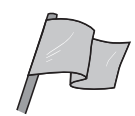
Jake and his dad will need _______________ yards of cloth in all.
Answer:
Jake and his dad will need 81 yards of cloth in all,
Explanation:
Given Jake and his dad are making flags for a scouting project. They are going to make (6, 12, 18) flags. Each flag takes (\(\frac{2}{3}\), \(\frac{3}{4}\), \(\frac{5}{6}\)) of a yard of cloth. Number of yards of cloth will they need in all are (6 + 12 + 18) X (\(\frac{2}{3}\) + \(\frac{3}{4}\) + \(\frac{5}{6}\)), 36 X \(\frac{2 X 4 + 3 X 3 + 5 X 2}{12}\) yards = 36 X \(\frac{8 + 9 + 10}{12}\) yards = 36 X \(\frac{27}{12}\) yards = 3 X 27 yards = 81 yards of cloth.
c. It takes (4\(\frac{1}{2}\), 4\(\frac{3}{4}\), 4\(\frac{1}{4}\)) feet of craft lace to make a short lanyard for a keychain. John wants to make a lanyard for each of his (5, 6, 7) aunts and uncles. How many feet of craft lace will he need in all?
Expression: _______________
John will need ______________ feet of craft lace.
Answer:
Expression: 18 X (4\(\frac{1}{2}\) + 4\(\frac{3}{4}\) + 4\(\frac{1}{4}\))
John will need 243 feet of craft lace,
Explanation:
Given It takes (4\(\frac{1}{2}\), 4\(\frac{3}{4}\), 4\(\frac{1}{4}\)) feet of craft lace to make a short lanyard for a keychain. John wants to make a lanyard for each of his (5, 6, 7) aunts and uncles. Number of many feet of craft lace will he need in all is 18 X (4\(\frac{1}{2}\) + 4\(\frac{3}{4}\) + 4\(\frac{1}{4}\)) feet = 18 X (\(\frac{4 X 2 + 1}{2}\) + \(\frac{4 X 4 + 3}{4}\) + \(\frac{4 X 4 + 1}{4}\)) feet = 18 X (\(\frac{9}{2}\) + \(\frac{19}{4}\) + \(\frac{17}{4}\)) we make common denominator 18 X \(\frac{9 X 2 + 19 X 1 + 17 X 1}{4}\) feet = 18 X \(\frac{18 + 19 + 17}{4}\) feet = 18 X \(\frac{54}{4}\) feet = 9 X 27 feet = 243 feet of craft lace.
d. The soccer team went to Pizza Palace to celebrate the end of the session. They got several rectangular pizzas for the players to share. Each player got (\(\frac{1}{5}\), \(\frac{1}{4}\), \(\frac{3}{8}\)) of one of the pizzas. Sara ate (\(\frac{3}{8}\), \(\frac{2}{3}\), \(\frac{5}{6}\)) of her share. How much of a whole pizza did Sara eat?
Expression: ________________
Sara ate ______________ of the whole pizza.
Answer:
Expression: (\(\frac{3}{8}\) + \(\frac{2}{3}\) + \(\frac{5}{6}\)) ÷ (\(\frac{1}{5}\) + \(\frac{1}{4}\) + \(\frac{3}{8}\)),
Sara ate 2\(\frac{3}{11}\) of the whole pizza,
Explanation:
Given the soccer team went to Pizza Palace to celebrate the end of the session. They got several rectangular pizzas for the players to share. Each player got (\(\frac{1}{5}\), \(\frac{1}{4}\), \(\frac{3}{8}\)) of one of the pizzas. Sara ate (\(\frac{3}{8}\), \(\frac{2}{3}\), \(\frac{5}{6}\)) of her share
Expression: (\(\frac{3}{8}\) + \(\frac{2}{3}\) + \(\frac{5}{6}\)) ÷ (\(\frac{1}{5}\) + \(\frac{1}{4}\) + \(\frac{3}{8}\)), Sara ate of the whole pizza (\(\frac{3}{8}\) + \(\frac{2}{3}\) + \(\frac{5}{6}\)) ÷ (\(\frac{1}{5}\) + \(\frac{1}{4}\) + \(\frac{3}{8}\)) we make common denominator we get \(\frac{3 X 3 + 2 X 8 + 5 X 4}{24}\) ÷ \(\frac{1 X 8 + 1 X 10 + 3 X 5}{40}\) = \(\frac{9 + 16 + 20}{24}\) ÷ \(\frac{8 + 10 + 15}{40}\) = \(\frac{45}{24}\) ÷ \(\frac{33}{40}\) = \(\frac{45}{24}\) X \(\frac{33}{40}\) = \(\frac{45 X 40}{24 X 33}\) = \(\frac{3 X 15 X 4 X 10}{4 X 2 X 3 X 3 X 11}\) = \(\frac{25}{11}\) as numerator is greater than denominator we write in mixed fraction as \(\frac{2 X 11 + 3}{11}\) = 2\(\frac{3}{11}\).
Question 2.
Use multiplication to check your answer for each of the division problems below.
ex: 100 ÷ 4 = 25
I know this is correct because
25 × 4 = 100
ex: \(\frac{1}{2}\) ÷ 2 = \(\frac{1}{4}\)
I know this is correct because
\(\frac{1}{4}\) ÷ 2 = \(\frac{1}{4}\)
a. \(\frac{1}{2}\) ÷ 4 = ______________
Answer:
\(\frac{1}{8}\),
Explanation:
Used multiplication to check the answer for each of the division problem above as \(\frac{1}{2}\) ÷ 4 is
\(\frac{1}{2}\) X \(\frac{1}{4}\) = \(\frac{1 X 1}{2 X 4}\) = \(\frac{1}{8}\).
b. \(\frac{1}{4}\) ÷ 2 = _______________
Answer:
\(\frac{1}{8}\),
Explanation:
Used multiplication to check the answer for each of the division problem above as \(\frac{1}{4}\) ÷ 2 is
\(\frac{1}{4}\) X \(\frac{1}{2}\) = \(\frac{1 x 1}{4 X 2}\) = \(\frac{1}{8}\).
c. \(\frac{1}{3}\) ÷ 2 = _______________
Answer:
\(\frac{1}{6}\),
Explanation:
Used multiplication to check the answer for each of the division problem above as \(\frac{1}{3}\) ÷ 2 is
\(\frac{1}{3}\) X \(\frac{1}{2}\) = \(\frac{1 x 1}{3 X 2}\) = \(\frac{1}{6}\).
d. \(\frac{1}{4}\) ÷ 4 = ________________
Answer:
\(\frac{1}{16}\),
Explanation:
Used multiplication to check the answer for each of the division problem above as \(\frac{1}{4}\) ÷ 4 is
\(\frac{1}{4}\) X \(\frac{1}{4}\) = \(\frac{1 x 1}{4 X 4}\) = \(\frac{1}{16}\).
Question 3.
Use the grids to model and solve each combination. Be sure to label your sketch and write the answer for each problem.
\(\frac{2}{3}\) × \(\frac{4}{6}\) = ________________
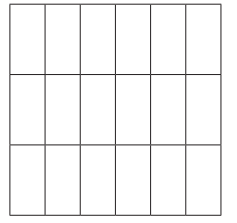
\(\frac{2}{5}\) × \(\frac{5}{7}\) = ________________

Answer:
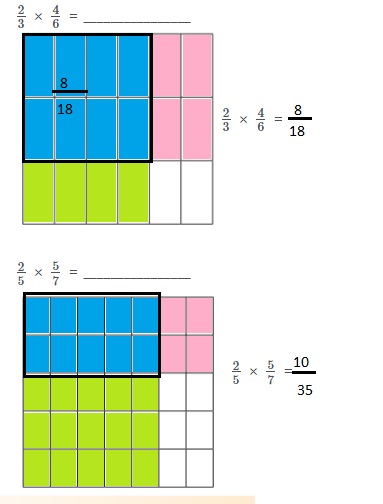
Explanation:
Used the grids to model and solved the combination as show above.
Question 4.
Solve each multiplication problem, and give the answer as a mixed number. Show all your work.
4 × \(\frac{5}{8}\) = ________________
12 × \(\frac{2}{3}\) = ________________
\(\frac{3}{5}\) × 6 = ________________
Answer:
2\(\frac{1}{2}\), 8, 3\(\frac{3}{5}\),
Explanation:
Given to solve 4 X \(\frac{5}{8}\) we get \(\frac{4 X 5}{8}\) = \(\frac{20}{8}\) = \(\frac{5}{2}\) as numerator is greater than denominator we write in mixed fraction as \(\frac{2 X 2 + 1}{2}\) = 2\(\frac{1}{2}\).
We have 12 × \(\frac{2}{3}\) we get \(\frac{12 x 2}{3}\) = 8 and \(\frac{3}{5}\) X 6 we get \(\frac{3 X 6}{5}\) = \(\frac{18}{5}\) as numerator is greater than denominator we write in mixed fraction as \(\frac{3 X 5 + 3}{5}\) = 3\(\frac{3}{5}\).
Question 5.
Write a story problem for one of the combinations in item 4.
Answer:
Story Problem: Suhan has 6 boxes of sweets he keeps \(\frac{3}{5}\) of them for him and shares the rest with friends how many sweets will he have?
Result : 3\(\frac{3}{5}\),
Explanation:
Writing a story problem for one of the combinations from item 4 of \(\frac{3}{5}\) X 6 as Suhan has 6 boxes of sweets he keeps \(\frac{3}{5}\) of them for him and shares the rest with friends how many sweets will he have? Solving \(\frac{3}{5}\) X 6 we get \(\frac{3 X 6}{5}\) = \(\frac{18}{5}\) as numerator is greater than denominator we write in mixed fraction as \(\frac{3 X 5 + 3}{5}\) = 3\(\frac{3}{5}\) therefore Suhan keeps 3\(\frac{3}{5}\) for him.
Question 6.
Valerie watched her friend multiply \(\frac{3}{4}\) × \(\frac{5}{6}\). Her friend got an answer larger than \(\frac{5}{6}\). Valerie thinks that the answer is not correct. Do you agree? Why or why not?
Answer:
No Valerie is incorrect,
Explanation:
Given Valerie watched her friend multiply \(\frac{3}{4}\) X \(\frac{5}{6}\). Her friend got an answer larger than \(\frac{5}{6}\). So solving to check \(\frac{3 x 5}{4 X 6}\) = \(\frac{5}{8}\) which is smaller than \(\frac{5}{6}\) therefore Valerie thinks that the answer is not correct.
Question 7.
Fill in the bubble to show what each expression below means. Then use labeled sketches and numbers to model and solve each problem. Show your work and remember to write the answer at the bottom of each box.
2 ÷ \(\frac{1}{3}\)
![]() How many groups of 2 are there in 3 ?
How many groups of 2 are there in 3 ?
![]() How many groups of 3 are there in 2?
How many groups of 3 are there in 2?
![]() What is 1 of 2?
What is 1 of 2?
Answer:
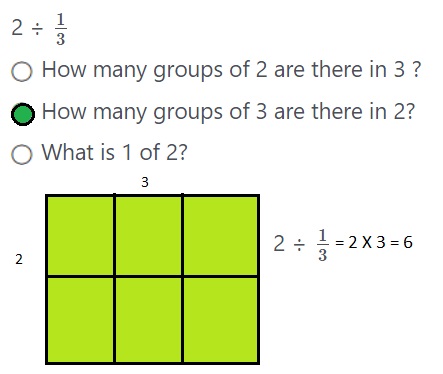
Explanation:
Filled in the bubble to show the expression. Then used labeled sketch and numbers to model and solved the problem as 2 ÷ \(\frac{1}{3}\) we get 2 X 3 = 6 which is how many groups of 3 are there in 2.
\(\frac{1}{4}\) ÷ 3
![]() How many groups of 4 are there in 3?
How many groups of 4 are there in 3?
![]() What is 1 of 3?
What is 1 of 3?
![]() If you split 1 into 3 equal shares, how big is each share?
If you split 1 into 3 equal shares, how big is each share?
Answer:

Explanation:
Filled in the bubble to show the expression. Then used labeled sketch and numbers to model and solved the problem as \(\frac{1}{4}\) ÷ 3 we get \(\frac{1}{4}\) X \(\frac{1}{3}\) = \(\frac{1 X 1}{4 x 3}\) = \(\frac{1}{12}\) which is many groups of 4 are there in 3.
Question 8.
CHALLENGE Maria says that dividing \(\frac{1}{2}\) by 3 is the same as multiplying \(\frac{1}{2}\) by \(\frac{1}{4}\). Do you agree with her? Why or why not? Use numbers, labeled models, or words to explain your thinking.
Answer:
Yes Agree,
Explanation:
Given Maria says that dividing \(\frac{1}{2}\) by 3 is the same as multiplying \(\frac{1}{2}\) by \(\frac{1}{3}\) solving we get \(\frac{1}{2}\) ÷ 3 = \(\frac{1}{2}\) X \(\frac{1}{3}\) = \(\frac{1}{6}\) and \(\frac{1}{2}\) X \(\frac{1}{3}\) = \(\frac{1}{2 x 3}\) = \(\frac{1}{6}\) both are same so I agree.